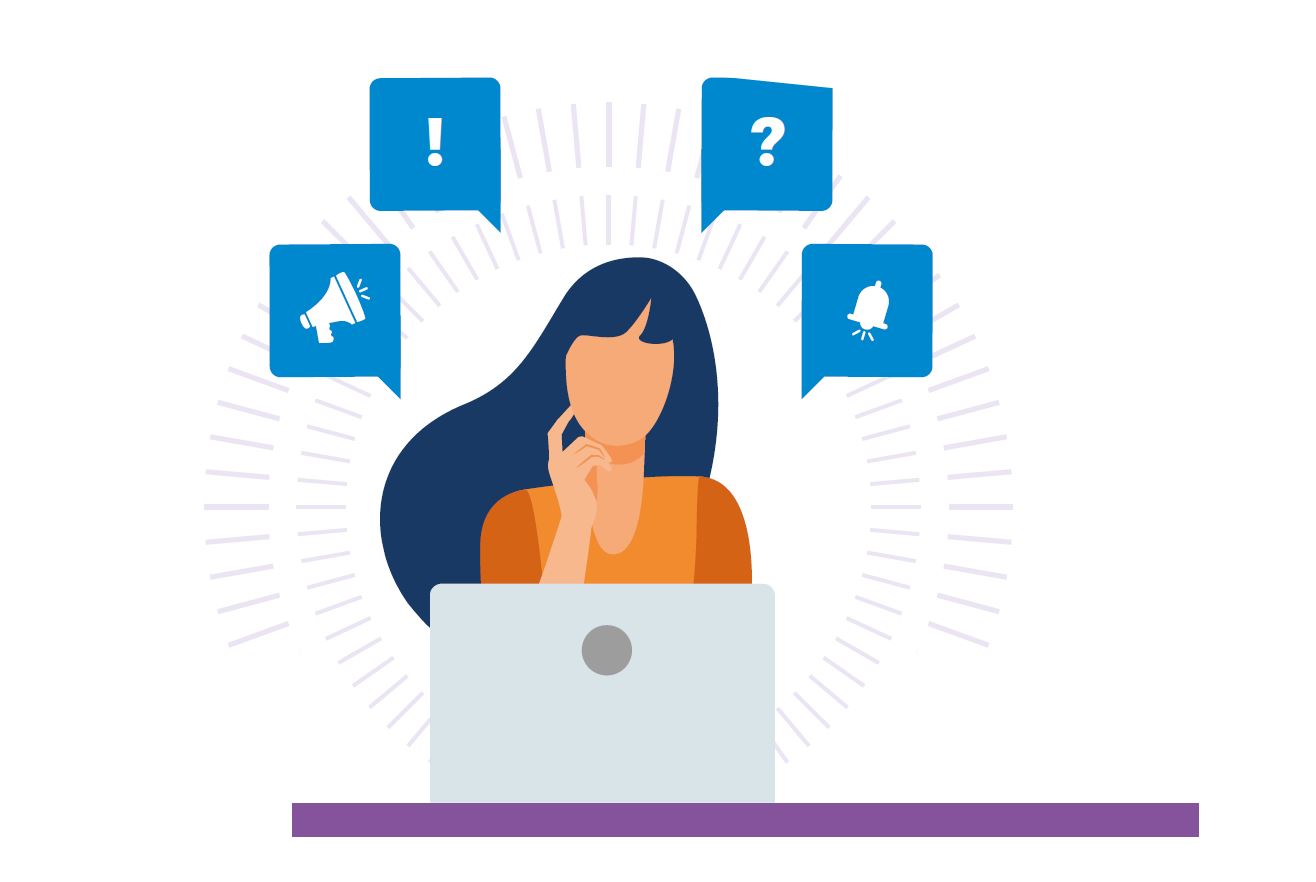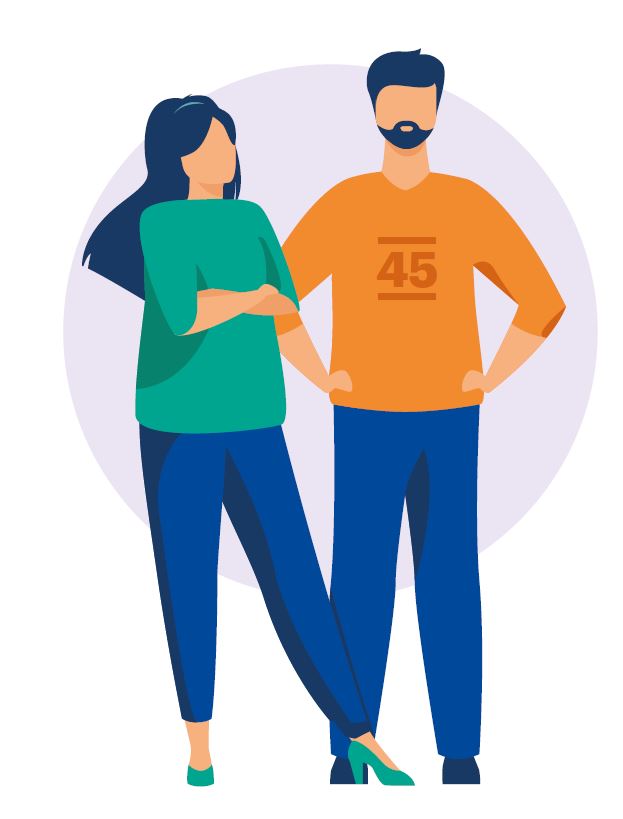How to survive the lies circulating on social media
Misinformation is a growing problem that affects us all. In fact, it is having consequences at many levels: on public and individual health, on democracy, on coexistence, on the reputation of people, businesses and companies and on other aspects of our lives.
One example is the COVID-19 health crisis, in which health professionals have seen a large increase in health related hoaxes. The pandemic has reinforced a pre-crisis trend: the growth of false information in this sector. During 2020, 3 out of 4 physicians attended consultations of patients concerned about some aspect of COVID-19 that turned out to be a hoon. We must be aware that misinformation not only impacts public and individual health, but also undermines trust in professionals.
The consequences of misinformation are also seen in other areas such as gender equality or immigration.
The fake news around migrant groups have been a constant over the last few years, resulting in problems of coexistence, stigmatization of groups and promotion of hatred. The Barcelona Public Prosecutor’s Office presented in early 2020 the first complaint for misinformation against a Twitter user who broadcast a video in which violence could be seen in a classroom, attributed the facts to unaccompanied minors in Spain, when in fact the video was from Brazil. The Public Prosecutor’s Office charged her with a crime against fundamental rights for denigrating this group and incentivating feelings of rejection and hostility.

The public’s concern about misinformation and its consequences is not new. In 2018, the Eurobarometer indicated that 8 out of 10 people in Europe were concerned about the challenge that misinformation posed to democracy. That same year another study in Spain established that 8 out of 10 respondents believed that the bulos harmed the reputation of individuals and organizations.
Lies are mostly viral on WhatsApp – where it is harder to detect who starts the lie – but they are also contagiously transmitted on other social networks.
Misinformation can compromise our decisions and harm us. Therefore, being able to digitally verify the information that comes to us is key to making free decisions, based on evidence and not manipulations.
What can you do to avoid lies on social networks?
1. Double-check the information.
Find out if suspicious information posted on a web page or on social media can be checked or, on the contrary, it is false. Check before sharing!
What can you look for? The author, the source, the contextualization, or the tone are good indicators of truthfulness.
2. Check the photographs and videos.
Analyze if the images and videos that come to you through social networks have been decontextualized, manipulated or manufactured entirely.
What can you look for? The author, the place, the date and some clues that could indicate that is has been edited. In videos you can also check if the sound is the original.
How to reverse image search?
Go to Google Images, click the camera icon, and upload the link or file of the suspicious photo. Google will provide you with a list of results. Does that image appear before the date they say it was taken? Are there similar photographs, but with a different element that has been manipulated? A very similar tool that you can also use is Tineye.
3. Verify the social media accounts.
It is important to check the information, but also verify that it is a real account and that it really posted the content you recived. If you recieve a screenshot of a post, you can check that the original account really posted it.
How to identify a bot account?
Bots are automated accounts. Usually they have few followers, a false or inexistent profile picture, sometimes they have a long number for the account name, they don’t post often and always similar messages on the same topic. Botometer is a useful tool to indentify them.
4. Keep and eye on fake news.
There are some fact-checkers in spain that work to stop misinformation, such as: Maldita, Newtral, Verificat or EFE Verifica.
5. Stop the chain.
If you find suspicious content, do not share it, do not help to amplify the misinformation. If they come from a WhatsApp group, warn that they are not true so that others can also quarantine these contents. And if you know that they are false, you can warn about it so that social networks study to label the information as false or take action.

6. Help others.
Everyone can be fooled sometime. IF you are sure that someone is spreading misinformation in Whatsapp groups or other networks, you can tell them in private. Make them doubt, encourage them to seek the origin of the information, to consult other sources and to check the content with evidence.
7. Look for new content.
Be careful of what family and friends send you; the people you love are not always reliable sources. Search the internet for reliable, informative and quality websites, social media accounts, podcasts and YouTube channels. You can compare and gain new knowledge and reflect on how we inform ourselves.
8. Learn, play and think.
Here are som resources to deepen your knowledge on misinformation. You can read some interesting manuals or test your abilities with this fun games:
- Games
Get bad news, University of Cambridge
Harmony Square, Universidad de Cambridge
- Manuals
Journalism, fake news and misinformation – UNESCO
Verification manual – European Journalism Center
9. Enrich yourself with quality journalism.
Social networks can give us very interesting things. To be well informed, choose appropriately who you follow: try to have a healthy “wall” or “timeline” free of false information. There are academics, journalists and disseminators on social networks who provide high-quality content. You can search or make a list and follow them. Enrich your information with investigative journalism and quality journalism on and off the networks. This content will continue to exist only if we value it as a society.
How do you make a Twitter list?
Go to any Twitter account and click on the icon with three dots. Choose the option “Add or remove from lists” and then click on “Create a new list”. You should give it a title, a description and choose if you want it to be a public or private list. Done! Now you can monitor the best sources of information.

This guide was made in partnership with:


